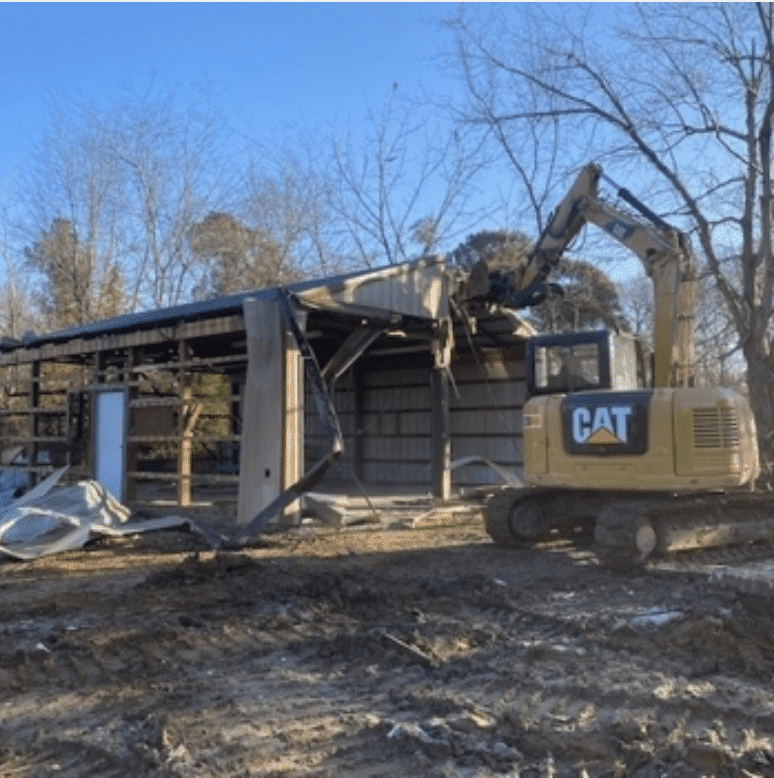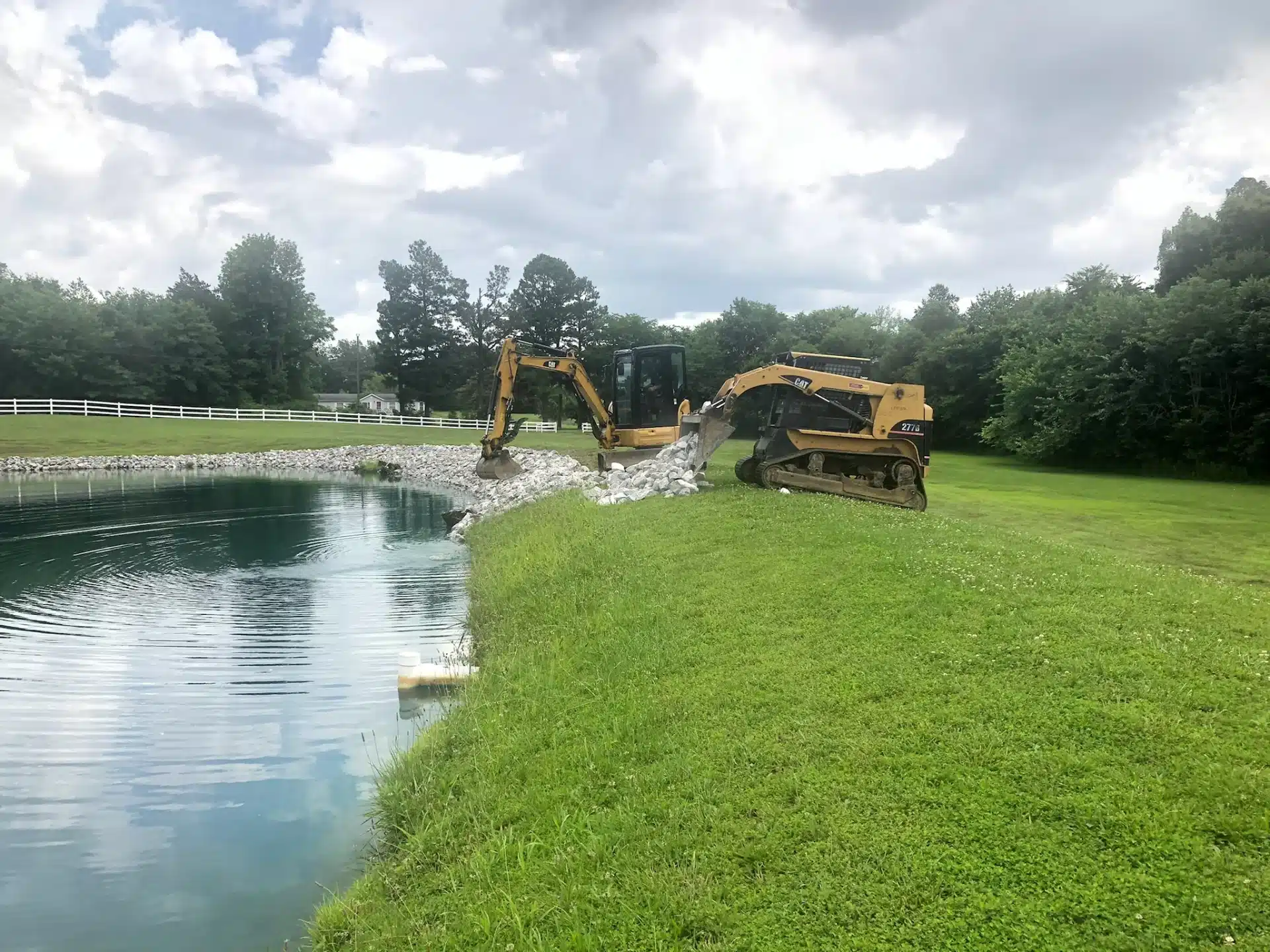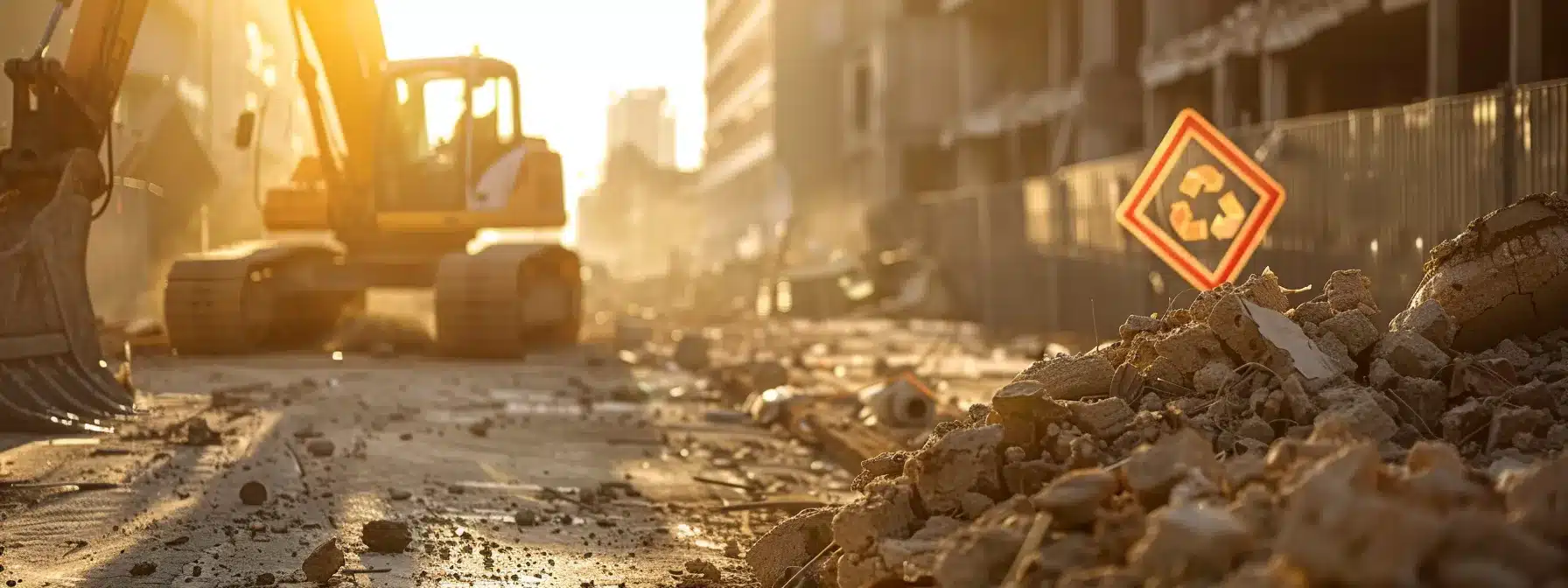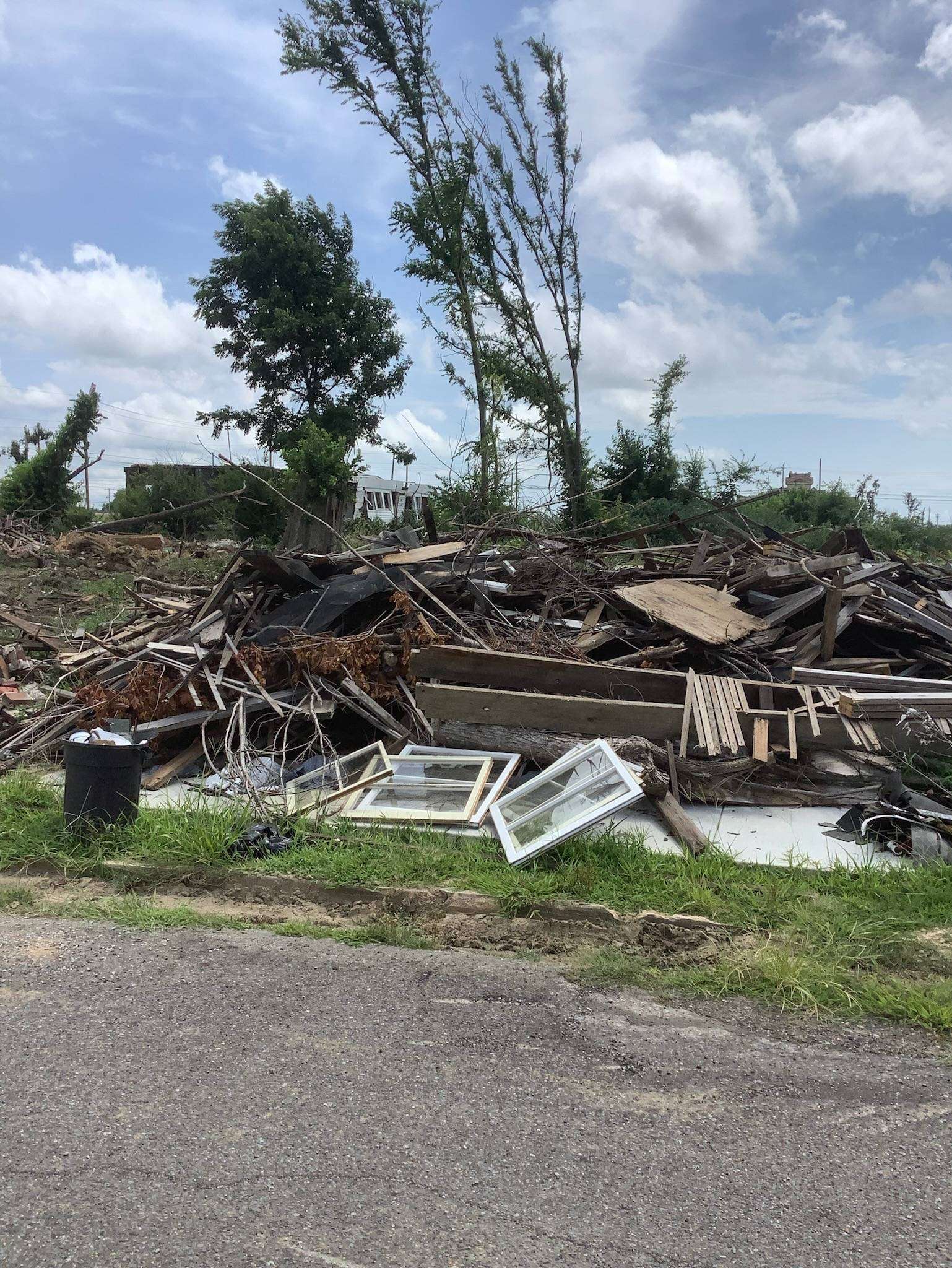In demolition, emergency preparedness isn’t just a precaution—it’s a necessity. Poor planning can lead to serious accidents, costly delays, and violations of code enforcement regulations. This guide will cover the development of an emergency response plan, key safety measures, and the importance of training your demolition team. By understanding these elements, you can effectively mitigate risks associated with solid waste management and debris handling, ensuring a safer work environment and compliance with integrated waste management practices. Engage with this content to bolster your preparedness strategy and protect your team.
Key Takeaways
- Identifying potential risks and hazardous materials is essential for safe demolition projects
- Regular training and drills enhance team preparedness for emergency situations on-site
- Effective communication protocols are crucial for a swift response during emergencies
- Continuous updates to emergency plans ensure compliance with regulations and safety standards
- Collaborating with local emergency services strengthens overall safety and preparedness during demolition activities
Understanding the Importance of Emergency Preparedness in Demolition
Identifying potential risks and hazards is essential for ensuring safety in demolition projects. Recognizing the impact of emergencies is crucial, as they can cause delays and additional costs, impacting overall project efficiency. Complying with safety regulations and standards, including obtaining a demolition permit, helps align your actions with guidelines set by authorities like the federal emergency management agency and mitigates disaster-related risks.
Identifying Potential Risks and Hazards
Identifying potential risks and hazards in demolition projects is fundamental to ensuring safety and compliance with environmental protection standards. You must be aware of the types of materials on-site, as hazardous substances can create significant emergency scenarios. For instance, the presence of asbestos or lead paint requires careful handling and specialized waste disposal methods to prevent health risks and environmental damage.
Natural disasters also pose significant risks during demolition, potentially causing structural instability and posing threats to workers and nearby communities. You should conduct a thorough risk assessment that includes analysis for emergency scenarios, ensuring that you have evacuation plans and protective measures in place. This proactive approach not only safeguards lives but also helps maintain project timelines and minimizes financial repercussions from delays due to unforeseen emergencies.
Recognizing the Impact of Emergencies on Demolition Projects
Understanding the impact of emergencies on demolition projects is crucial for successful outcomes. Emergencies like flooding can disrupt materials management, leading to potential damage to building materials and increasing the volume of municipal solid waste generated. When waste is improperly managed, it can complicate the cleanup process, further delaying project timelines and raising costs.
Effective emergency preparedness enables you to anticipate and mitigate these risks. For instance, having a streamlined waste disposal strategy in place ensures that debris is quickly and safely handled in the event of an emergency. This proactive approach not only protects your team but also upholds compliance with environmental regulations, minimizing the impact on surrounding communities and preserving the integrity of your project.
Complying With Safety Regulations and Standards
Complying with safety regulations and standards is not just a legal requirement; it is critical for ensuring the well-being of everyone involved in a demolition project. You must conduct thorough inspections for hazardous materials like asbestos, which can pose significant health risks. A well-prepared site plan that includes specific measures for identifying and handling such substances can help you avoid costly incidents and protect your team and the community.
Additionally, implementing a sound strategy for managing demolition waste is essential for compliance with environmental regulations. Ensuring proper recycling of materials not only minimizes waste but also reflects your commitment to sustainability. By adhering to these standards, you can enhance project efficiency and reduce the likelihood of regulatory penalties, ultimately contributing to the success of your demolition efforts.
Developing a Comprehensive Emergency Response Plan
Establish clear objectives and goals for your emergency response plan in demolition to address potential risks effectively. Assign roles and responsibilities to team members, ensuring everyone knows their part in the event of an emergency. Develop communication protocols for emergencies and create evacuation and shelter procedures. Additionally, coordinating with local emergency services enhances safety and supports efficient waste collection while minimizing building risks.
This structured approach will enable you to maintain control during a crisis, ensuring a swift response and reducing the likelihood of accidents, injuries, or increased landfill waste disruptions.
Setting Clear Objectives and Goals
Setting clear objectives and goals for your emergency response plan is vital in demolition projects. By focusing on key areas such as debris removal and disaster recovery, you can ensure a swift and efficient response during emergencies. For example, defining specific protocols for handling household hazardous waste can help in minimizing risks associated with hazardous materials, aligning your efforts with the standards set forth by the United States Environmental Protection Agency.
Additionally, establishing measurable goals allows for effective evaluation of your emergency preparedness. You should aim for a systematic approach to stormwater management during demolition, ensuring that runoff is controlled and that the site remains compliant with environmental regulations. By doing so, you not only protect the environment but also enhance your team’s safety, ultimately leading to successful project outcomes.
Assigning Roles and Responsibilities to Team Members
Assigning roles and responsibilities to team members is a crucial step in emergency management during demolition projects. Clear designation of tasks ensures that everyone knows their role in disaster response, making the process more efficient when a hazardous situation arises. For example, designating a specific individual to oversee hazardous waste management can greatly reduce the risks associated with unsafe materials, providing a direct line of communication for safety-related concerns.
When you establish a well-defined structure for roles, it fosters accountability and allows for a coordinated response to any emerging hazards. Supreme Enterprises LLC emphasizes the importance of training team members on their specific responsibilities, helping them understand both individual tasks and how they contribute to the overall safety of the project. A well-organized team is better equipped to respond quickly and effectively, significantly enhancing safety outcomes in emergency situations.
Establishing Communication Protocols for Emergencies
Establishing effective communication protocols is vital for managing emergencies in demolition projects. You should implement a clear and concise notification system that allows all team members to quickly understand the nature of the threat and the immediate steps to take. Utilizing tools such as two-way radios or mobile communication apps ensures real-time updates and instructions are accessible to everyone on-site, helping to maintain safety and minimize confusion during a crisis.
Additionally, conducting regular drills can significantly enhance your team’s response to emergencies. You must create scenarios that test your communication protocols and ensure that all workers understand their roles and how to report incidents. By reinforcing these practices, you foster a culture of readiness within your team, which is essential for effective emergency management in demolition and ultimately supports the overall safety and efficiency of your project.
Creating Evacuation and Shelter Procedures
Creating effective evacuation and shelter procedures is essential for maintaining safety during demolition projects. You should clearly define evacuation routes and establish designated safe areas, ensuring that all team members know where to go in the event of an emergency. Regular drills will help your team practice these procedures, allowing them to respond quickly and efficiently when the situation arises, minimizing panic and confusion.
Consider potential emergencies, such as structural collapses or hazardous material exposure, when developing your evacuation plan. You must communicate these procedures clearly during safety meetings and training sessions, so everyone understands the importance of following them. By prioritizing easy access to safe shelters and providing guidance on how to get there, you can significantly enhance your team’s readiness and minimize risks during demolition operations.
Coordinating With Local Emergency Services
Coordinating with local emergency services is an essential element of your emergency response plan for demolition projects. Establishing a relationship with fire departments, law enforcement, and emergency medical services beforehand ensures a faster and more efficient response in case of an incident. For instance, inviting local emergency service representatives to review your site and emergency plans can provide valuable feedback and enhance your readiness for potential hazards.
Additionally, providing local emergency services with detailed site plans and information about hazardous materials present at the demolition site can aid their preparedness efforts. This collaboration helps to create a unified response strategy, which is vital for protecting both your team and the surrounding community. By prioritizing these connections, you can build a safer work environment and improve overall emergency management during demolition activities.
Implementing Safety Measures and Best Practices
Implementing safety measures and best practices is essential for effective emergency preparedness in demolition projects. You should conduct thorough risk assessments before demolition to identify hazards, utilize personal protective equipment (PPE) to safeguard your team, and ensure the proper handling of hazardous materials. Additionally, maintaining equipment and machinery safely is crucial, and enforcing site access controls helps manage potential risks. Each of these areas plays a significant role in ensuring safety on demolition sites.
Conducting Risk Assessments Before Demolition
Conducting thorough risk assessments before demolition is vital for identifying potential hazards that could impact safety and project efficiency. You should evaluate the site for the presence of hazardous materials, structural integrity, and environmental concerns. By systematically addressing these factors, you can develop a comprehensive understanding of the risks involved, which will allow you to implement tailored safety measures that protect both your team and the surrounding community.
An effective risk assessment not only highlights immediate dangers but also provides a framework for emergency preparedness. For example, pinpointing areas prone to structural failure enables you to devise evacuation strategies and protective measures. By preparing for specific risks, such as equipment failures or hazardous material leaks, you can minimize disruptions and ensure compliance with safety regulations throughout the demolition process.
Utilizing Personal Protective Equipment (PPE)
Utilizing Personal Protective Equipment (PPE) is essential for ensuring safety on demolition sites. You should ensure every team member is equipped with the appropriate gear, such as hard hats, gloves, and respiratory protection, to mitigate risks from hazardous materials and flying debris. Providing robust training on the correct usage and maintenance of PPE further enhances protection, helping you safeguard your workforce and maintain compliance with safety regulations.
In practical terms, incorporating PPE into your demolition safety protocol means you can significantly reduce the likelihood of injuries during operations. For example, using high-visibility vests ensures that workers can be easily seen, especially in chaotic environments. By actively prioritizing PPE, you not only comply with safety standards but also foster a culture of responsibility and preparedness among your team, ultimately leading to smoother project execution and enhanced overall safety.
Ensuring Proper Handling of Hazardous Materials
Ensuring proper handling of hazardous materials is a fundamental aspect of emergency preparedness in demolition projects. You must familiarize yourself with the materials present on-site, including lead, asbestos, and other toxic substances, to implement safe handling procedures. By conducting thorough training for your team on regulatory compliance and best practices for handling these materials, you reduce risks and protect the health of your workers and the surrounding community.
Effectively managing hazardous materials also involves developing a waste disposal plan that adheres to local regulations. For instance, when removing materials that contain asbestos, you should use specialized containment and disposal methods to minimize airborne particles. This proactive approach not only ensures safety but also aligns your project with environmental standards, helping you avoid potential legal and financial consequences.
Maintaining Equipment and Machinery Safely
Maintaining equipment and machinery safely is essential for effective emergency preparedness in demolition projects. Regular maintenance checks can identify potential issues before they escalate into dangerous situations. For example, inspecting hydraulic systems and ensuring that all safety features are functioning correctly can prevent equipment failures that might lead to accidents on-site.
Additionally, creating a maintenance schedule can help you stay organized and ensure that machinery remains in optimal condition throughout the project duration. You must train your team to recognize warning signs, such as unusual noises or decreased performance, which may indicate that equipment requires attention. By prioritizing equipment safety, you not only protect your workforce but also enhance overall project efficiency and reduce the risk of emergencies related to machinery malfunctions.
Enforcing Site Access Controls
Enforcing site access controls is vital for ensuring safety during demolition projects. Establishing clear boundaries helps restrict entry to authorized personnel only, minimizing the risk of unauthorized access that can lead to accidents or exposure to hazardous conditions. By implementing physical barriers, such as fences or gates, along with a thorough check-in system for workers and visitors, you enhance site security and maintain a safer environment for everyone involved.
Additionally, conducting regular training sessions on access protocols ensures that your team understands the importance of following these guidelines. You should communicate the potential dangers of unauthorized access, such as exposure to toxic materials or equipment malfunctions. By emphasizing these points, you not only reinforce safety practices but also cultivate a culture of awareness and responsibility among your team, ultimately contributing to efficient emergency preparedness throughout the demolition process.
Training and Preparing the Demolition Team
Providing regular safety training sessions equips your demolition team with the necessary skills to manage emergencies effectively. Organizing emergency drills and simulations enhances their readiness, while educating workers on emergency procedures ensures everyone knows their roles. Continuously updating skills and knowledge fosters a culture of safety, ultimately improving preparedness and response during potential crisis situations.
Providing Regular Safety Training Sessions
Providing regular safety training sessions is crucial for preparing your demolition team for potential emergencies. These sessions equip your workers with the knowledge and skills necessary to respond appropriately during critical situations. For example, training on the proper use of personal protective equipment (PPE) ensures that team members understand how to safeguard themselves from hazards on-site.
Additionally, conducting emergency drills enhances readiness by familiarizing your team with evacuation procedures and safety protocols. You should incorporate real-life scenarios that might occur during a demolition project to reinforce learning effectively. By prioritizing ongoing training, you cultivate a culture of safety that not only protects your workforce but also improves overall project efficiency in managing emergencies.
Organizing Emergency Drills and Simulations
Organizing emergency drills and simulations is vital for preparing your demolition team to handle unexpected situations effectively. By regularly conducting these drills, you allow your team to practice response procedures, solidify their understanding of evacuation routes, and reinforce the importance of safety protocols. Practical scenarios tailored to potential emergencies specific to your demolition projects, such as hazardous material exposure or equipment failures, will give your team the experience needed to react quickly and confidently when real crises arise.
Additionally, including comprehensive feedback sessions after each drill can enhance the learning experience, allowing team members to identify what worked well and what needs improvement. These simulations foster a culture of safety where every worker feels involved and accountable for their role in emergencies. Ultimately, consistently organizing emergency drills empowers your team to minimize risks and improves overall readiness in managing demolition site emergencies.
Educating Workers on Emergency Procedures
Educating workers on emergency procedures is essential for enhancing safety during demolition projects. You should implement comprehensive training sessions that detail the specific actions to take in various emergency scenarios, such as fires, hazardous material spills, or structural failures. By providing practical examples and ensuring workers understand their roles in these situations, you empower them to respond effectively and confidently when real emergencies occur.
Additionally, reinforcing these procedures through regular review sessions ensures that your team remains updated on the latest safety practices and protocols. Incorporating hands-on exercises, such as evacuation drills, allows workers to practice their response in a controlled environment. This approach not only boosts their preparedness but also fosters a collective commitment to safety, significantly reducing the risk of accidents during demolition activities.
Updating Skills and Knowledge Continuously
Updating skills and knowledge continuously is essential for maintaining safety and efficiency in demolition projects. You should implement ongoing training programs that reflect the latest safety regulations and industry best practices. By regularly exposing your team to new techniques and emergency procedures, you can ensure everyone is equipped to handle evolving risks effectively, thereby enhancing overall project success.
Encouraging a culture of continuous learning among your demolition team empowers workers to stay current on safety measures and emergency protocols. Consider organizing workshops or inviting experts to discuss advancements in demolition safety technology and practices. This proactive approach not only prepares your team for real-world challenges but also increases confidence and cohesion, directly contributing to safer work environments and more efficient demolition operations.
Monitoring and Reviewing Emergency Preparedness
Monitoring and reviewing emergency preparedness is critical to the success of demolition projects. You should regularly perform audits and inspections to assess the effectiveness of your emergency plans. Gathering feedback from employees and stakeholders will provide valuable insights for improvement, while revising plans based on lessons learned ensures continued relevance. Staying informed about industry updates also plays a vital role in maintaining safety and efficiency.
Performing Regular Audits and Inspections
Performing regular audits and inspections is essential for evaluating the effectiveness of your emergency preparedness efforts in demolition. You should schedule these assessments systematically to identify weaknesses in your plans and protocols. For instance, inspecting safety equipment like personal protective gear can reveal whether your team is adequately protected against site hazards, ensuring compliance with safety regulations and enhancing overall site safety.
Additionally, engaging your team during these audits can foster a safety-oriented culture, as they can provide firsthand insights on potential risks and improvement areas. By addressing the feedback gathered during inspections, you not only strengthen your emergency response plan but also empower your workers, helping them feel more confident and aware of their roles in emergencies. This proactive approach positions your demolition projects for greater resilience against unexpected situations.
Gathering Feedback From Employees and Stakeholders
Gathering feedback from employees and stakeholders is a critical component of monitoring and reviewing emergency preparedness in demolition projects. Engaging your team in open discussions about their experiences during drills or actual emergencies provides valuable insights that can help identify gaps in your emergency response plan. For instance, team members may highlight areas where communication broke down or where additional safety measures could have been implemented, allowing you to adjust protocols effectively.
Additionally, seeking input from stakeholders, such as local emergency services and community members, can enhance your understanding of environmental factors affecting safety. Their perspectives can guide improvements in evacuation procedures or site safety measures, ultimately leading to a more robust emergency preparedness framework. By fostering a collaborative environment where feedback is valued, you enhance not only safety but also project efficiency during demolition operations.
Revising Emergency Plans Based on Lessons Learned
Revising emergency plans based on lessons learned is essential for enhancing safety and efficiency in demolition projects. After each drill or actual emergency, take the time to analyze what worked and what did not. For example, if communication breakdowns occurred, you need to adjust your protocols to ensure that all team members understand the steps they must take in future emergencies.
Incorporating feedback from your team during these evaluations also plays a crucial role in refining your emergency plans. When you actively engage your workers in discussions about their experiences, you gain invaluable insights that can lead to improvements. This iterative process not only strengthens your emergency response frameworks but also fosters a culture of continuous learning, helping you adequately prepare for any potential challenges in demolition environments.
Staying Informed About Industry Updates
Staying informed about industry updates is vital for maintaining effective emergency preparedness in demolition projects. You should subscribe to relevant newsletters, join industry associations, and regularly review government regulations and guidelines to stay ahead of changes that could impact your operations. For instance, updates from the Occupational Safety and Health Administration (OSHA) can provide insights into new safety standards that may require adjustments to your emergency response plans.
Additionally, participating in workshops and training sessions offered by industry experts can enhance your knowledge of best practices and emerging risks in demolition. By networking with other professionals, you can share experiences and insights that may lead to improved safety protocols. Ultimately, being proactive in seeking this information will empower you to adapt to evolving challenges and ensure the well-being of your team and the success of your projects.
Case Studies and Real-Life Examples
Learning from past demolition emergencies provides crucial insights for improving safety and efficiency. You will discover successful implementations of emergency plans that have effectively mitigated risks. Additionally, common mistakes made during demolition projects will be highlighted, along with strategies to avoid them. These real-life examples offer practical guidance that reinforces the importance of thorough emergency preparedness.
Learning From Past Demolition Emergencies
Learning from past demolition emergencies can significantly enhance safety protocols in your projects. Analyzing incidents like the 2016 collapse during a controlled demolition in Miami highlights the importance of thorough site assessments and adherence to safety regulations. By studying the factors that contributed to the collapse, you can implement similar assessments and develop stronger emergency response plans to prevent such occurrences in your future work.
In addition to understanding previous failures, successful case studies provide valuable insights into effective emergency preparedness. For example, a demolition team in Los Angeles utilized enhanced training and simulations to successfully manage a hazardous material incident. By incorporating these best practices into your own training programs, you can better equip your team to handle emergencies, ensuring safety and efficiency throughout your demolition projects.
Successful Implementations of Emergency Plans
One notable example of successful emergency plan implementation occurred during a demolition project in Seattle, where a systematic training program prepared the team for potential hazardous material spills. The team conducted regular drills that simulated emergency scenarios, allowing them to familiarize themselves with evacuation routes and waste disposal procedures. This proactive approach resulted in rapid and effective responses during an unexpected incident, significantly minimizing health risks and project delays.
Another impressive case took place in Chicago, where a demolition company implemented comprehensive emergency protocols after analyzing a previous structural failure incident. They established clear communication channels with local emergency services and provided ongoing training for their workers. As a result, when faced with an emergency during demolition, the team executed their evacuation plan efficiently, ensuring the safety of all personnel on-site and demonstrating the effectiveness of a well-crafted emergency response plan.
Common Mistakes and How to Avoid Them
One common mistake in demolition emergency preparedness is underestimating the importance of communication protocols. Inadequate communication can lead to unclear instructions during a crisis, exacerbating confusion and jeopardizing safety. To avoid this, ensure that all team members are trained on communication systems and protocols, fostering a culture of quick information sharing that enhances response effectiveness in emergencies.
Another frequent error involves neglecting the regular review and updating of emergency response plans. Relying on outdated procedures can lead to ineffective responses to evolving risks and regulations. You should routinely assess and revise your emergency plans based on drills, feedback, and industry advancements to ensure continuous alignment with best practices and optimal safety during demolition projects.
Contact Supreme Enterprises for Demolition Services
When you’re in need of expert demolition services, look no further than Supreme Enterprises. With years of experience in the industry, Supreme Enterprises is a reliable and trusted provider of demolition solutions for both residential and commercial projects. Our team of professionals possesses the knowledge, skills, and equipment necessary to handle demolitions of all sizes with efficiency and precision.
Whether you’re looking to demolish a small structure or a large building, Supreme Enterprises can tailor our services to meet your specific needs. From site evaluation and planning to demolition and waste disposal, they will manage the entire process with professionalism and expertise. By choosing Supreme Enterprises for your demolition project, you can rest assured that the job will be completed safely, on time, and within budget. Contact Supreme Enterprises today to discuss your demolition needs and experience the difference that our top-notch services can make for your project.













